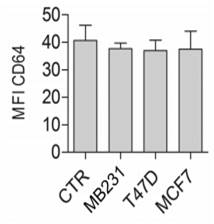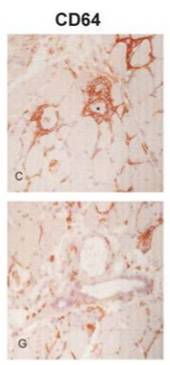In July and August, two papers have the cited the use of Ximbio's monoclonal antibody; anti-FCGR1, clone 10.1. These papers, published in Breast Cancer Research and Arthritis Research Therapy, show the use of clone 10.1 in flow cytometry analysis.

Flow cytometry analysis of CD64+ cells normalised to the mean fluorescence instensity (MFI). (Sousa et al. 2015. Breast Cancer Res. 17(1):101.)
Anti-FCGR1, clone 10.1 has been extensively published upon and has been shown to have a broad range of applications in immunohistochemistry, immunofluorescence, immunoprecipitation and neutralisation. It was raised against rheumatoid synovial fluid cells and fibronectin purified human monocytes and binds to the Fc-gamma receptor 1 (otherwise known as CD64).
Clone 10.1 was developed at Cancer Research UK's London Research Institute by Professor Nancy Hogg. Professor Hogg has made a significant contribution to the field of cell surface biology. In the early seventies it was Nancy who discovered the fibronectin protein and observed its disappearance when cells become cancerous. Professor Hogg ran the Leukocyte Adhesion Laboratory at the London Research Institute from 1982 to her retirement in 2011. in 2002, she was elected to the Fellowship of the Academy of Medical Sciences for her distinguished contributions to the field of leukocyte biology.

Immunostaining in polymyositis (top panel) and dermatomyositis (bottom panel) using clone 10.1. (Schleinitz et al. 2008. Arthritis Rheum. 58(10):3216-23.)
View the datasheet for more information and publications.
HAVE YOU REGISTERED?
Join the ever-growing global Ximbio community. Register and receive updates about new reagents, institutes and new features being added to the website.
